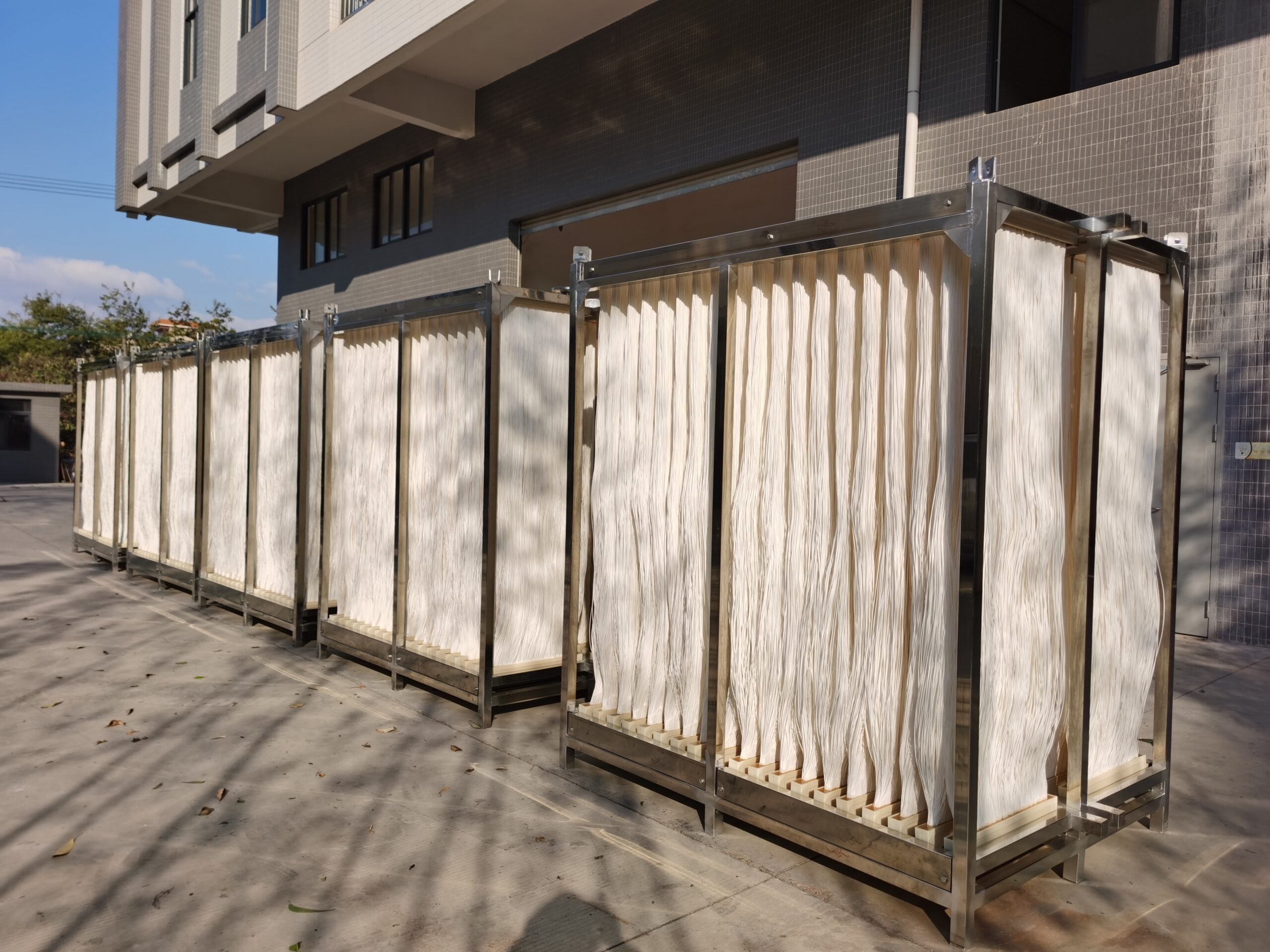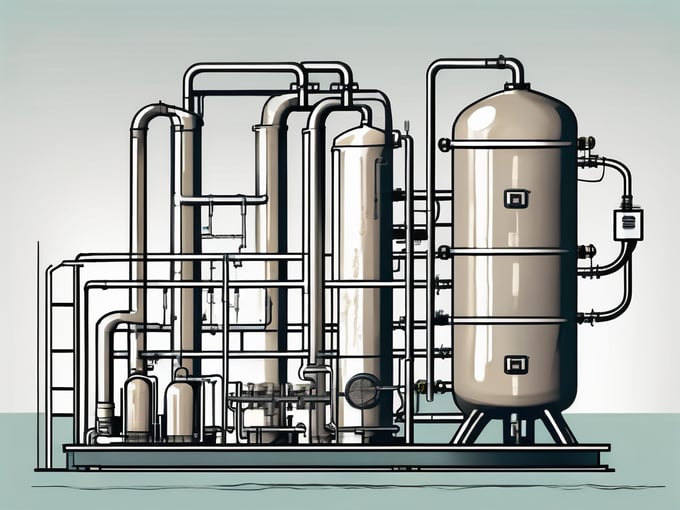The Benefits of Membrane Bioreactors in Sustainable Wastewater Management
Membrane layer bioreactors (MBRs) represent a pivotal advancement in sustainable wastewater administration, efficiently combining biological treatment with sophisticated membrane layer purification technology. As the demand for lasting options increases, exploring the complex advantages of MBRs may disclose unanticipated implications for the future of wastewater treatment systems.
Summary of Membrane Layer Bioreactors
Membrane layer bioreactors (MBRs) stand for a substantial improvement in wastewater therapy technology, integrating organic destruction with membrane layer purification to improve the performance of the treatment procedure. This ingenious system combines the benefits of traditional activated sludge procedures with membrane layer modern technology, permitting boosted solid-liquid separation. MBRs make use of semi-permeable membranes to separate treated water from biomass, causing premium effluent that can be reused or safely released right into the environment.
The functional style of MBRs normally includes a bioreactor where microbes damage down natural matter, adhered to by a membrane unit that filterings system the combined alcohol. This arrangement not just minimizes the impact of the therapy center however additionally permits greater biomass concentrations and reduced hydraulic retention times. Additionally, MBRs can treating a broader variety of impurities, consisting of microorganisms and nutrients, making them appropriate for different applications, from municipal wastewater therapy to commercial effluent handling.
The combination of MBRs right into wastewater administration systems is indicative of a growing trend towards lasting and efficient techniques in environmental engineering. Their ability to produce top notch effluent while reducing area needs settings MBR technology as a vital player in modern wastewater treatment remedies.
Improved Effluent Quality

The membrane layer filtration procedure functions as a physical obstacle, enabling the retention of bacteria and particle issue, which adds to a clearer and cleaner effluent (Membrane Bioreactor). MBRs operate at greater biomass concentrations than standard turned on sludge systems, promoting a lot more reliable biodegradation of toxins. This brings about a reduction in biochemical oxygen need (BODY) and total put on hold solids (TSS) levels in the last effluent
Furthermore, MBRs demonstrate excellent efficiency in treating tough wastewater structures, such as industrial effluents and wastewater with high nutrient loads. Because of this, the effluent created is commonly of higher quality, allowing for even more versatile disposal alternatives and lowered environmental impact. Eventually, the improved effluent quality accomplished with MBR technology underscores its vital duty in progressing lasting wastewater administration practices.
Water Reuse Opportunities
The top quality effluent produced by membrane bioreactors (MBRs) opens up significant opportunities for water reuse in numerous applications. MBRs successfully eliminate impurities, consisting of virus, suspended solids, and organic matter, resulting in cured water that meets or surpasses regulatory criteria for reuse. This top quality permits for the application of water recycling campaigns throughout diverse fields.
One famous application remains in farming, where treated wastewater can be made use of for watering, advertising sustainable farming methods while saving freshwater sources. In addition, MBR-treated effluent company website can be made use of for industrial processes such as air conditioning, cleaning, and as a process water resource, dramatically minimizing the demand for drinkable water in these operations.
In metropolitan environments, MBRs help with making use of recovered water for landscape irrigation, commode flushing, and other non-potable usages, adding to the overall durability of supply of water systems. The combination of MBR modern technology in decentralized systems help in managing local water demands, specifically in water-scarce areas.
Lowered Environmental Effect
How can the adoption of membrane layer bioreactors (MBRs) add to a reduced ecological effect in wastewater administration? MBRs considerably improve the therapy effectiveness of wastewater while reducing eco-friendly disruptions. anchor By incorporating biological treatment procedures with membrane layer filtration, MBRs efficiently get rid of a variety of contaminants, including raw material, nutrients, and microorganisms. This sophisticated filtration causes higher-quality effluent, which is important for shielding water communities and reducing the worry on all-natural water bodies.
Furthermore, MBRs run at lower hydraulic retention times compared to conventional systems, causing smaller therapy plant impacts. This portable layout lowers land use, thereby preserving natural environments and biodiversity. The procedure also generates less sludge than typical methods, reducing disposal difficulties and lowering greenhouse gas exhausts related to sludge management.
Furthermore, MBRs promote the healing of important sources, such as water and nutrients, contributing to a round economy. By allowing water reuse for irrigation or industrial procedures, MBRs assist ease freshwater deficiency, hence advertising lasting water make use of practices. Inevitably, the fostering of MBR innovation represents a significant stride in the direction of minimizing the environmental influence of wastewater management systems.
Economic Advantages of MBRs

Additionally, MBRs facilitate the production of top quality effluent, which can be recycled for numerous applications, such as farming watering and commercial processes - Membrane Bioreactor. This reuse capacity can substantially reduce water procurement costs, giving an economic incentive for markets encountering strict water regulations
The small design of MBR systems likewise leads to reduced land demands, which is particularly important in metropolitan locations where realty is pricey. By decreasing area, towns and industries can reduce land purchase and upkeep costs.
Furthermore, MBRs commonly require much less frequent maintenance and have a like it longer lifespan than standard systems, further adding to set you back savings. In recap, the economic benefits of MBRs-- ranging from lowered operational expenses to land cost savings and effluent reuse-- make them an engaging selection for lasting wastewater monitoring, providing both lasting and prompt economic advantages.
Verdict
Additionally, MBRs contribute to lowered environmental influences through small styles and reduced sludge generation. Economic advantages better improve their feasibility, making MBRs a promising remedy for dealing with the difficulties of wastewater therapy and advertising lasting resource management.
Membrane bioreactors (MBRs) stand for a pivotal development in lasting wastewater administration, effectively combining biological therapy with innovative membrane layer filtration innovation.Membrane bioreactors (MBRs) stand for a considerable innovation in wastewater therapy innovation, incorporating organic destruction with membrane filtration to enhance the performance of the therapy procedure.Attaining improved effluent top quality is one of the most significant benefits of making use of membrane layer bioreactors (MBRs) in wastewater treatment.Furthermore, MBRs show superb efficiency in dealing with tough wastewater structures, such as commercial effluents and wastewater with high nutrient tons.Incorporating membrane layer bioreactors (MBRs) right into wastewater monitoring not just lowers ecological influence yet likewise provides significant financial advantages.